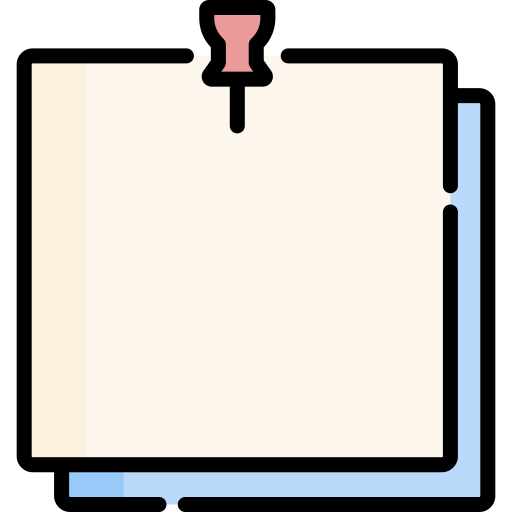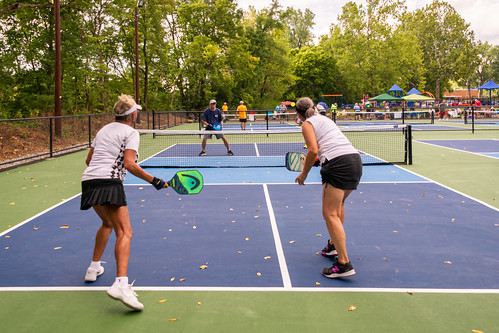Pickleball is very similar to sports such as tennis and badminton. They all involve hitting a target with a paddle or racket over a net toward your opponent’s court. And just like tennis and badminton, a pickleball court is divided into several zones.
In this article, we will be tackling the different zones of a pickleball court and their respective rulings. Not only that, but we will also help you in becoming more effective at using the different pickleball zones through various tips and drills.
What are the Main Zones in Pickleball?
The shape and divisions might be similar, but the names and rulings for different racket sports are different. In pickleball, the court is equally divided into two by a net. Each side is further divided into the non-volley zone and the service area. The non-volley line separates these two zones.
Apart from the non-volley zone and service area, you also have the baseline and sideline. You need to be familiar with all of these pickleball court zones if you want to play your best game. Let’s go through them one by one, shall we?
-
The Kitchen or the Non-volley Zone (NVZ)
The most prominent zone that is unique to pickleball is the Kitchen, or more properly known as the Non-volley Zone. As the name suggests, you aren’t allowed to perform a volley while within the kitchen.
For those who are new to the game, a volley is done by hitting the ball before it can bounce on the ground. You can do a volley anywhere in the service area. But if your feet are in the non-volley zone, you will have to wait for the pickleball ball to bounce on the court before hitting it.
The kitchen zone extends seven feet on both sides of the net or centerline, and it covers the entire width of the court. This tends to force players to play away from the net, farther from opposing players, encouraging longer rallies and strategic play.
The kitchen is a unique pickleball concept, so newcomers to the sport might have a hard time adjusting to it. Here are some rules related to the non-volley zone that you need to know about:
- You are not allowed to volley within this zone.
- If your feet touch just the kitchen edge or line while you’re volleying, it is still considered a fault.
- If the momentum of the volley forces you to step in the zone—even if the ball is already dead—it is still considered a fault.
- Any part of your body, gear, or garment should not touch the NVZ when volleying.
- At any other time, you are allowed to step inside the kitchen.
- Serves are not allowed to hit the non-volley zone.
-
The Service Area or the Volley Zone (VZ)
The Service Area, also called the Volley Zone by some, makes up the rest of the court. It is in this area that you are free to play off the bounce or perform a volley. The volley zone has a centerline running in the middle, further dividing it into two sides: the right and left service areas.
The service area is located inside the court, and it is where your serves should go. If your serve goes outside the service area, it is considered a fault.
The most important point to remember about serving in pickleball is the two-bounce or double-bounce rule.
The two-bounce rule states that after the ball is served, the receiving team must let the ball bounce once before returning it. Once the ball is returned to its side, the serving team must then wait for the ball to bounce once before hitting it back. After both returns, the teams can then use different strategies to hit the ball and score points.
Important Serving Guidelines
Here are other important serving guidelines for pickleball:
- The serving player or team serves from the right when their score is even and from the left when their score is odd.
- The very first serve of every game is done on the right because all players start out with 0 points.
- The first serve must be made crosscourt, meaning right zone to opposing right zone, left zone to opposing left zone.
- If they score a point, the server switches to the left service area and serves from there because their score is now 1. If a second point is scored, the server switches back to the right. This goes on until a fault is committed.
- In doubles, if a fault is committed, the serve goes to the partner who must serve from their service area. If another fault is committed, the next serve goes to the opposing team.
-
The Baseline and Sideline (The Out-of-Bounds Zone)
The court is encompassed by the baselines and sidelines, which basically make up the court’s boundaries. Beyond them lies the out-of-bounds zone. The baseline is the farthest line from the net, running parallel to it. Meanwhile, the sideline runs along the sides, which means they are the longest lines of the court.
Players are allowed to step in the out-of-bounds zone as long as the ball stays within the playable area. It is considered out-of-bounds when the first bounce hits outside the sideline and baseline. If it hits either of those lines, it is considered in.
How Do You Effectively Use the Different Zones in Pickleball?
If you are a newbie to the game, or looking to sharpen your understanding of the different zones in pickleball, here are a few tips:
-
Learn from Experienced Players.
Second-hand experience is a great way to learn. So, why not learn from the best? You can look up games online and observe how the pros use the different pickleball zones to their advantage.
Better yet, go to your local pickleball park, gym, or public court, and watch how other players play. You can even play against them and ask them for advice. This is a more interactive approach to learning how to use the different zones in pickleball.
-
Practice Your Positioning Inside the Court.
Proper positioning is crucial when playing any game, pickleball included. You need to know where to go after a serve, and where to position yourself for delivering different shots during a rally.
The best way to go about this is by finding yourself a coach or training partner and practicing with them as often as you can. You should also train your footwork. Staying on your toes helps you navigate the court with ease and reduces your risk of injury.
-
Strategize Your Hits.
Always be on the lookout for good opportunities to score a point or force your opponent to commit a fault. Utilize the full length and width of the court, and come up with different strategies to keep your opponents guessing so you always have the upper hand.
This means learning when to avoid hitting a ball and how to control your shots so they land on optimal areas of the court. You don’t need to return the ball all the time. For example, your opponent might hit the ball too hard that it lands out-of-bounds. If this happens, they will lose the rally without you having to lift a finger.
You could also try returning the balls repeatedly on one side of the court, then suddenly hitting it on the other side to catch your opponent off-guard. You have to be careful with this one, though, as the opponent could do the same thing to you first.
The Best Drills To Practice Court Navigation
Practice makes perfect. This quote is so cliche, but also so true. To familiarize yourself with the different zones within the pickleball court, you need to practice. You can do this on your own or with a training partner or coach. But try to get to know the court before playing on it.
Lateral Shuffles
In a rally, players like to get close to the kitchen and kitchen line. It’s a great place to score winning shots from, so the ball is constantly being hit back and forth between the two teams. To keep up with the ball’s constant change of direction, you have to be quick in shifting your stance and position from side to side.
Lateral shuffle drills help you move from side to side quickly, which helps you react quicker to sudden volleys and dinks.
While practicing, set up two markers side by side and move from one marker to the other. Advance by moving faster and faster between both markers.
Split Step Drills
Knowing how and when to do a split step is very important as it helps you move around quickly in the game. A split step is where you take both your feet off the ground, sort of like a hop, which helps you react and move quickly toward where the ball is heading.
This can be practiced by going back and forth with your training partner, who should also practice his own split step. As you progress, you can ask your training partner to throw in a few volleys or sudden changes in direction to keep you on your toes.
Footwork Exercises
As mentioned earlier, footwork is extremely important in pickleball. The faster your feet can move, the better you can react and move around the court.
You can use an agility ladder and do some drills for quicker feet movements, or use a jump rope—whatever suits you best. The important thing is to keep your feet light and quick.
Wrapping Up
Knowing how to use the different zones in pickleball could mean the difference between winning and losing the game. Using the entire court to your advantage will definitely help in giving your opponent a really bad time.




































